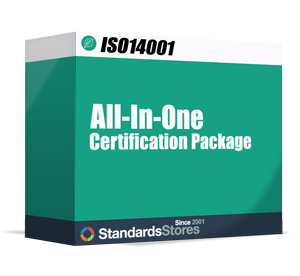ISO 14001 Audit Types and How They are Executed
ISO 14001 has two main categories of audits: internal and external. Audits are a key component for becoming ISO certified and you must have internal auditors, and pass the 2-stage registrar audit by an external party in order to become ISO 14001 certified. Below we will break down the different ways audits can be conducted and discuss internal, external and certification audits.
The three ways audits can be conducted are:
- On-site audits are performed in full days. The number of days needed for an audit depends on several factors including size, complexity, risk, and nature of an organization. The International Accreditation Forum (IAF) has provided guidelines for registrars to calculate audit time.
- Remote audits may be performed via web meetings, teleconferencing or electronic verification of processes. Remote audits are less common and typically not as effective as on-site audits.
- Self-audits do not always mean an internal audit. A self-audit can be requested of your customer to eliminate the need for them to use their resources and still offer some assurance that you are meeting requirements.
Audit Types
Internal audits are audits that are performed by your organization and are a self-examination of your organization’s EMS, performed on-site. Internal audits have many benefits including preparing your organization for external audits. The internal auditor must be independent of the area being audited to ensure objective results. (It is recommended to have more than one auditor to ensure no one is auditing his or her area of responsibilities). Internal audits are an ISO 14001 requirement and they are critical to the success of your EMS. (We offer internal audit training to ensure your internal auditors are able to perform an effective internal audit as well as an audit checklist to help guide your internal auditors on covering all areas of your EMS.)
Internal audits will be used to assess conformity, evaluate the effectiveness, and identify opportunities for improvement. When you perform an internal audit, you will be able to compare your environmental management system to the requirements and understand if there are any non-conformances. This will allow you to correct your EMS and ensure that your organization will meet the requirements for the external auditor and allow for certification.
StandardsStores offers several online training courses for Internal Auditors
External audits include customer, supplier, certification and surveillance audits. A customer audit is where an existing, or potential customer, audits your organization to verify you can or are meeting their requirements. If you are auditing an existing or potential supplier, we consider this a supplier audit. Supplier audits can be one of the methods used to meet the requirements around control of external providers.
A certification audit is an audit your selected registrar will conduct to verify conformance against the ISO 14001 standard before they issue your official ISO 14001 certificate. Certification audits are broken into two stages. Stage one audit is performed to determine an organization’s readiness for the stage two audit. Stage one is oftentimes conducted remotely in order to not spend additional costs on travel. If the auditor determines you meet the criteria for the stage one audit, your organization will proceed to the stage two audit. The stage two audit will always be on-site audits. This is where the auditor will interview your staff and review your documented information (procedures, records, etc.) to verify you are meeting all the ISO 14001 requirements. Certification audits are typically conducted every three years.
After certification, your registrar will check-up on you periodically using surveillance audits to verify you are still upholding your EMS and the ISO requirements. Surveillance audits are very much like certification audits, with the exception that they are not issuing or re-issuing a certificate. These are typically conducted by your registrar annually.
How did auditing change under the latest revision of ISO 14001?
The most significant changes between the ISO 14001:2004 and 2015 standard include the concepts of risk-based thinking, context of the organization and new leadership requirements. You can expect that your auditor will be looking to see that you meet these requirements just the same as they will be confirming you meet all the other requirements. This is why it is important when you are beginning your journey towards ISO 14001:2015 certification that you have a gap analysis performed to identify any potential nonconformities you may have in these areas so that you can address these gaps before your certification audit.


